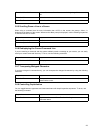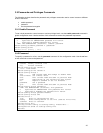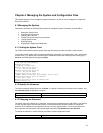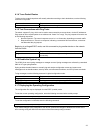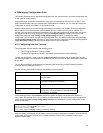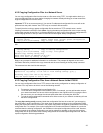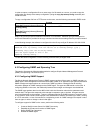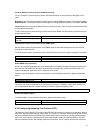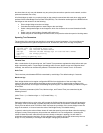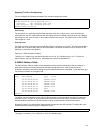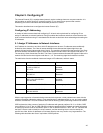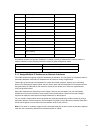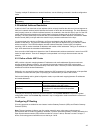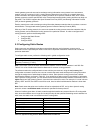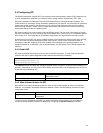
37
Create or Modify Access Control for SNMP Community
You can configure a community string, which acts like a password, to permit access to the agent on the
router.
Read Only (ro)
: The string that defines access rights for reading SNMP data objects. The default is
public
.
Read-Write (rw)
: The string that defines access rights for writing SNMP data objects. The default is
private
.
Important! Be sure to change the SNMP default community strings in order to prevent unauthorized access
to management information.
To set up the community access string to permit access to the SNMP, use the following command from the
global command mode.
Command Purpose
snmp-server community string
{ro | rw}
Define the community access string.
Establish the Contact, and Location of the SNMP Agent
Set the system contact and the location of the SNMP agent so that these descriptions can be accessed
through the configuration file.
To set the system contact (sysContact) string, use the following command in global configuration command.
Command Purpose
snmp-server contact text
Set the system contact string.
snmp-server location text
Set the system location string.
Define SNMP Trap Operations
A trap is an unsolicited message sent by an SNMP agent to an SNMP manager indicating that some event
has occurred. The SNMP trap operations allow the user to configure the router to send information to a
network management application when a particular event occurs.
To define traps for the agent to send to the manager, use the following commands in global configuration
mode.
Command Purpose
snmp-server host address
Specify the recipient of the trap message.
The 35516 can send an SNMP trap to its configured trap receivers if it detects a duplicate IP address. To
turn on duplicate IP detection, use the following command in global configuration mode:
Router(config)# duplicate-ip detect
Disable the SNMP Protocol
To disable SNMP, use the following command in global configuration mode:
Command Purpose
no snmp-server
Disable SNMP operation.
4.3.2 Configuring Spanning Tree Protocol (STP)
The Spanning Tree Protocol (STP) is part of the IEEE 802.1D standard. It provides for a redundant network
without the redundant traffic through closed paths. For example, in a network without spanning tree protocol,
the same message will be broadcast through multiple paths, which may start an unending packet-passing
cycle. This in turn causes a great amount of extra network traffic, leading to network downtime. The STP
reduces a network like this, with multiple, redundant connections, to one in which all points are connected,



